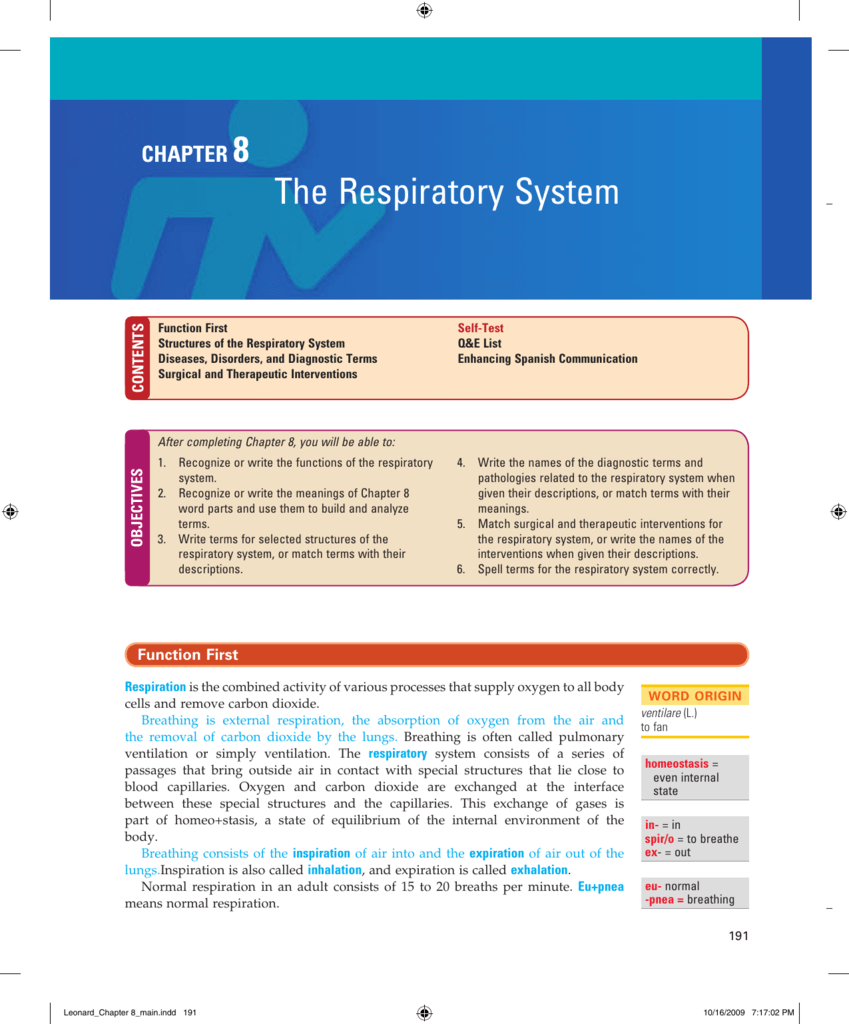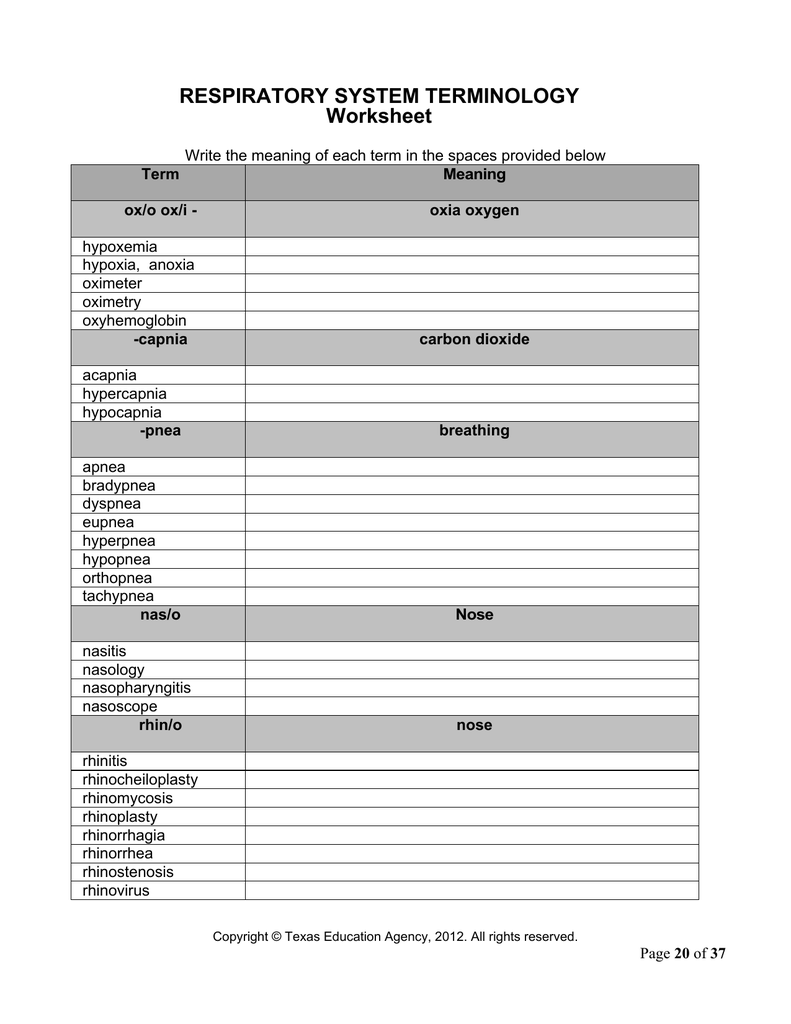What Term Is Used to Describe Bradypnea and Hypopnea
Labored or difficult breathing is known as dyspnea. A PaO2 value of less than __ mmHg andor PaCO2 value greater than __ mmHg in the face of oxygen therapy generally indicates current or impending pulmonary failure.

Chapter Eleven Respiratory System Ppt Download
8 breaths per minute.

. Which of the following would correctly describe moving your arm toward the midline of the body. What term is used to describe an abnormal decrease in the rate and depth of respiration. Apnea is the medical term used to describe slowed or stopped breathing.
Dyspnea c. Normal pH for a cat or dog breathing room air is __. Glossary hypopnea Shallow or slow respiration hypoxemia The condition of having low.
In an adult patient this term would identify someone who has a respiratory rate less than 10 breathsmin. Sleep apnea and hypopnea are different versions of the same sleep disorder. Breathing the respiration process is something vital to everything a human being does.
Bradypnea Brady. Its not the same thing as apnea which is when breathing completely stops. A - Bradypnea Page Reference.
Shallow or slow resperationhigh-poh-NEE-ahhypo- means decreased. Greek root word meaning slow is a term used to define a breathing frequency that is less than the normal limits. Bradypnea means abnormally slow breathingHypopnea.
12 breaths per minute C. Orthopnea b. Bradypnea is slower-than-normal breathing.
Hi-popne-ah abnormal decrease in depth and rate of respiration. There are many possible causes of bradypnea or bradypnoea including cardiac problems medications or drugs and hormonal imbalances. Percentage of unchanged drug that reaches the actual organs.
A Bradycardia B Tachypnea C Hypopnea D Orthopnea. Apnea can affect people of all ages and the cause depends on the type of apnea you have. Bradypnea can be a sign of a condition that affects your metabolism or another problem like sleep apnea carbon monoxide poisoning or a drug overdose.
Tachypnea b. What term is used to describe temporary cessation of breathing. A Bradypnea B Tachypnea C Hypopnea D Hypocapnia.
Hypopnea c. Hypopnea abnormally shallow breathing with or without a decrease in the respiratory rate. An apnea is the complete blockage of air while hypopnea is the partial blockage of air.
May occur with a panic attack. What term is used to describe breathing that is easier in a sitting position. Orthopnea d.
And labored breathing or shortness of breath is called. Bradypnea d. Some sleep specialists differentiate periodic breathing from Cheyne-Stokes respiration based on whether a central apnea is present and classify patients with intervening central apneas rather than hypopneabradypnea as having Cheyne-Stokes.
16 breaths per minute D. A PaO2 value of less than __ mmHg is considered dangerous. Posted by Jack Snoring at 542 AM 1 comments Saturday December 2 2006.
Is a term used to describe a condition that consists of abnormally rapid breathing along with panting. What term describes the type of breathing. 2003 by Saunders an imprint of Elsevier Inc.
In dyspnea breath is labored and you feel short of. Miller-Keane Encyclopedia and Dictionary of Medicine Nursing and Allied Health Seventh Edition. Bradypnea B Orthopnea C Eupnea D Dyspnea.
It can be caused by drugs poisons injury or medical conditions and requires medical evaluation. This process supplies the human body and its various organs with oxygen and it helps the organism to get rid of waste products and toxins. Keeping this in view what is the medical term for painful breathing.
Which breathing pattern is used to describe a normal rate and depth of breathing. Click to see full answer. Also Know how is labored breathing treated.
Bradypnea can happen during sleep or when youre awake. What term is used to describe breathing that is easier in a sitting position. Slowed breathing is called bradypnea.
Hypo- implies an abnormally low level of. During exhalation A The lungs expand B Oxygen is taken into the lungs C The diaphragm descends D Carbon dioxide is removed from the lungs. 8 breaths per minute B.
Many times they occur together. Hypopnea is the term for a combination of both slow and shallow breathing. What term is used to describe an abnormal decrease in the rate and depth of respiration.
See also bradypnea and hypoventilation. Bradypnea rare and slow breath apnea cessation of breathing hyperpnea the increased amplitude of breathing at the normal rate Speaking about hypopnea in these terms it can be defined as the reduced amplitude of breathing at the normal rate. Bradypnea is the medical term for abnormally slow breathing.
Which of the following terms has a prefix that indicates without. A Abduction B Adduction. What respiratory value would be the most anticipated for an adult with bradypnea.
What term is used to describe a bluish discoloration of the skin caused by a lack of oxygen. The medical terms for breathing symptoms are dyspnea difficulty breathing tachypnea rapid breathing hypopnea shallow breathing hyperpnea deep breathing and apnea absence of breathing. Rapid breathing 24 breaths.
Dyspnea Unpleasant awareness of difficulty breathing shortness of breath or breathlessness Eupnea Normal rate and depth of breathing Bradypnea Less than normal rate of breathing Tachypnea Rapid rate of breathing Hypopnea Decreased rate of breathing Hyperpnea Increased depth of breathing with or without an increased rate Orthopnea. Breathing is especially crucial during. 20 breaths per minute.
Pharmokinetics term used to describe that a generic and brand name are the same. Bradypnea abnormally slow respiration where brady- means slow. What word should you use to describe this condition.
Slower breathing. Periodic breathing as mentioned above denotes periods of hyperpnea and tachypnea alternating with hypopnea and bradypnea.

Pnoe Bedeutet Atem Medical Terminology 4 Fun Suffix Respiratorysystem Vet Tech Terminologie Gesundheit 2019 Medical Terminology Medical Knowledge Medical Terminology Study

Comments
Post a Comment